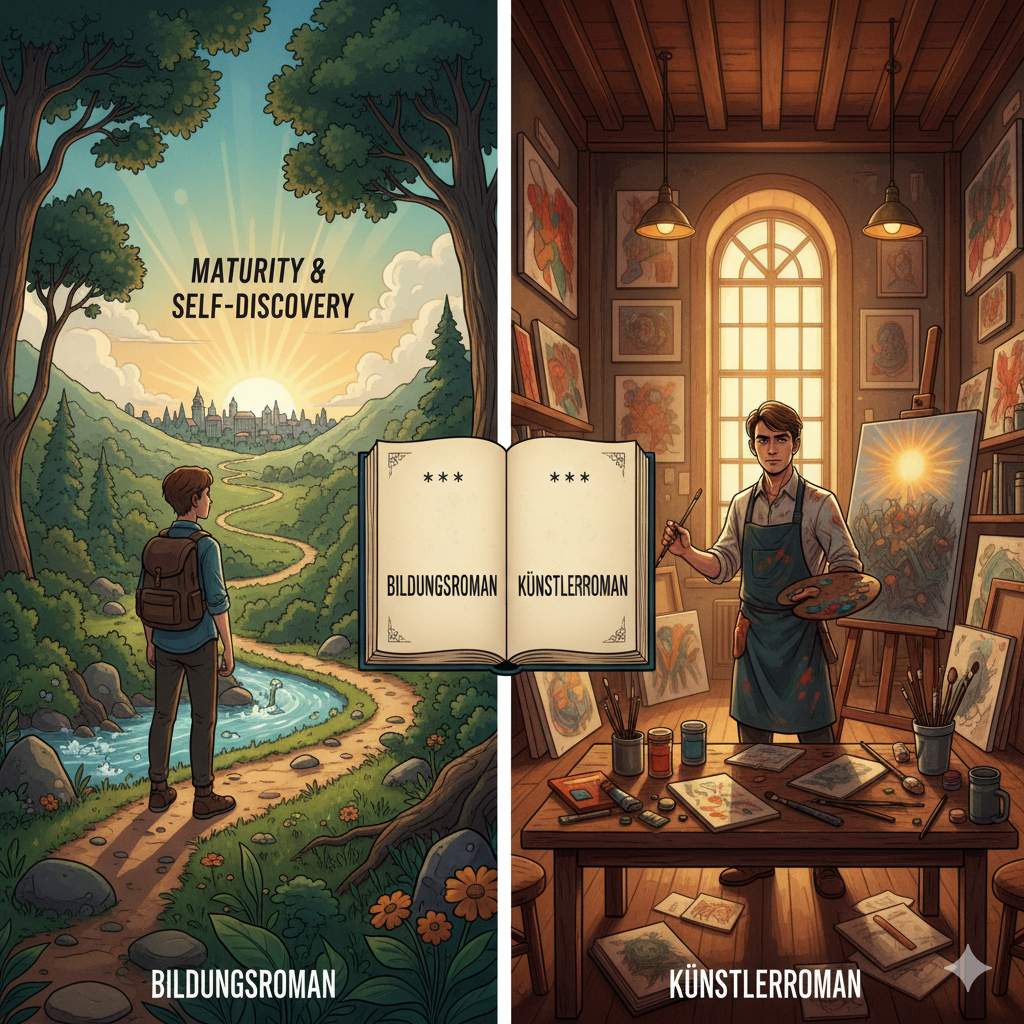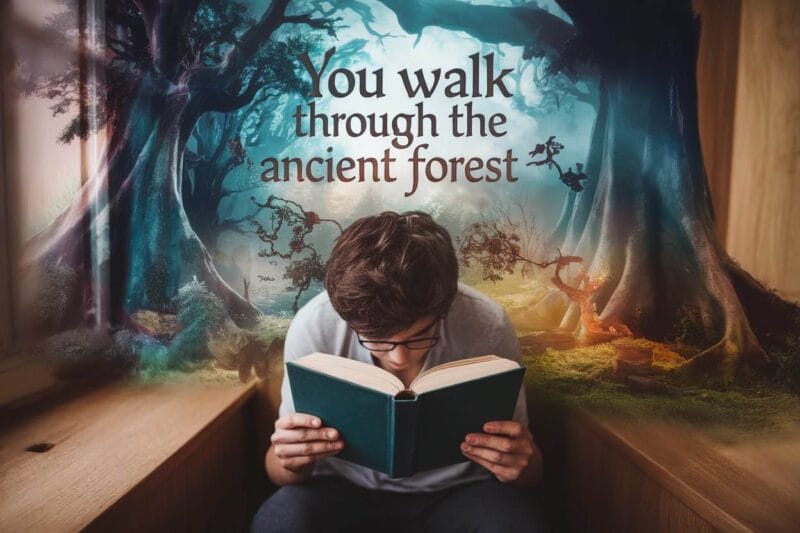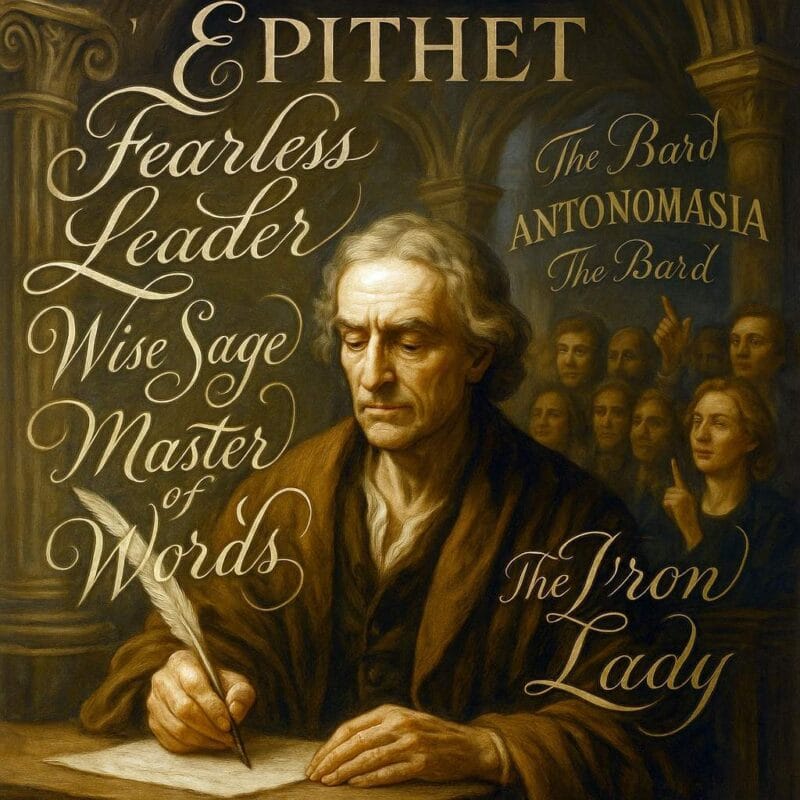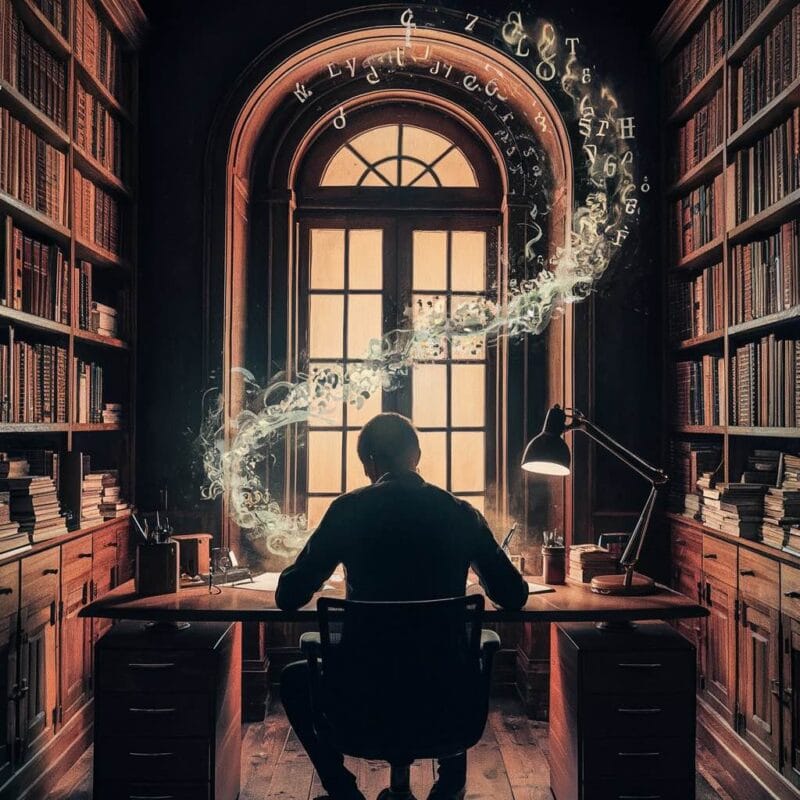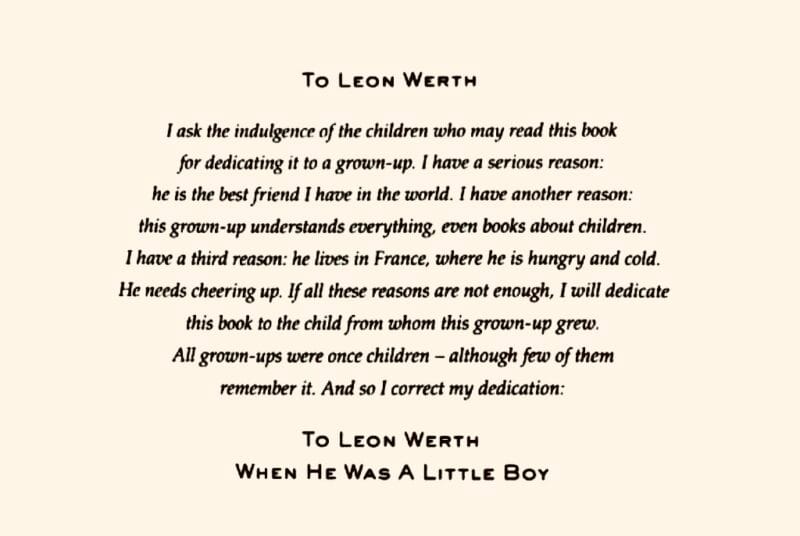The terms “Bildungsroman” and “Künstlerroman” often surface in literary studies, yet many readers are uncertain about what distinguishes the two. Both belong to the family of novels that trace growth and transformation, but their focus and scope differ in important ways. However, understanding their difference involves more than memorizing definitions; it requires seeing how each form captures the process of becoming, whether as an individual in society or as an artist confronting the demands of creativity.
What is a Bildungsroman?
The Bildungsroman, a German term meaning “novel of formation,” charts the development of a protagonist from youth to maturity. This growth often involves conflicts with family, community, and social institutions, leading to a reconciliation that establishes the character’s place in the wider world. The form became prominent in the late eighteenth and nineteenth centuries and has remained influential across centuries and cultures.
Johann Wolfgang von Goethe’s Wilhelm Meister’s Apprenticeship (1795–96) is widely recognized as the archetype. It follows Wilhelm’s journey from youthful restlessness toward a vocation that harmonizes his inner desires with the social order. The structure of the Bildungsroman is often circular: the protagonist begins with dissatisfaction, experiences trials and detours, and ends with a form of integration, if not full contentment.
What is a Künstlerroman?
The Künstlerroman, literally “artist’s novel,” is a subtype of the Bildungsroman but with a narrower lens. Instead of general maturation, it concentrates on the growth of an artist or creative figure. The struggles here are not simply social or familial but creative and aesthetic. Questions of vocation dominate: How does one commit to an artistic life, often at the expense of conventional stability?
James Joyce’s A Portrait of the Artist as a Young Man (1916) exemplifies the form. Stephen Dedalus defies religious, familial, and national expectations in pursuit of an artistic destiny. Similarly, Thomas Mann’s Tonio Kröger (1903) depicts an individual torn between bourgeois life and the solitary demands of art. In both cases, the novel’s arc hinges less on integration into society than on estrangement from it, a necessary price for pursuing art.
Origins and Historical Context
Both forms originate in German literature of the late eighteenth and nineteenth centuries. The Enlightenment’s emphasis on rational self-cultivation provided fertile ground for the Bildungsroman. Romanticism, with its focus on individual genius and artistic calling, gave rise to the Künstlerroman. The shared German roots explain why the terms are often confused, yet the intellectual backdrop differs: one reflects ideals of social harmony, the other dramatizes the alienation of the artist.
Key Differences Between Bildungsroman and Künstlerroman
Although the Künstlerroman is often treated as a branch of the Bildungsroman, the two differ in several ways:
- Focus of development: The Bildungsroman emphasizes personal and social maturation, while the Künstlerroman centers on the emergence of artistic identity.
- Resolution: In the Bildungsroman, the protagonist usually finds a reconciled position within society. In the Künstlerroman, resolution often takes the form of separation, as the artist commits to art rather than social belonging.
- Conflict: The Bildungsroman dramatizes clashes between self and society; the Künstlerroman highlights tensions between art and life.
More Examples of Bildungsroman
Beyond Goethe, the Bildungsroman tradition extends widely. Charlotte Brontë’s Jane Eyre (1847) traces Jane’s growth from orphaned childhood to independence and moral maturity. Charles Dickens’ David Copperfield (1850) follows a young man through hardship toward a professional and personal life defined by perseverance. These works highlight how the genre reflects social and historical conditions. They also portray individual struggle and resolution.
More Examples of Künstlerroman
In addition to Joyce and Mann, Rainer Maria Rilke’s The Notebooks of Malte Laurids Brigge (1910) captures the internal struggles of an artist confronting modernity. More recently, Michael Cunningham’s By Nightfall (2010) revisits the Künstlerroman tradition in a contemporary setting, focusing on how artistic identity shapes middle age. These novels demonstrate how the genre evolves while remaining tied to the question of what it costs to live as an artist.
Why the Distinction Matters
The distinction between Bildungsroman and Künstlerroman clarifies how literature treats the theme of development. When we speak of a Bildungsroman, we often think of a protagonist finding a way to exist within a social fabric. The Künstlerroman, however, frames that growth through the lens of artistic vocation, often dramatizing estrangement. Recognizing this difference sharpens our appreciation for novels of formation, showing how they dramatize either integration or separation as paths of becoming.
Further Reading
Bildungsroman on Wikipedia
Künstlerroman on Wikipedia
Bildungsroman and Künstlerroman Analysis by eNotes
